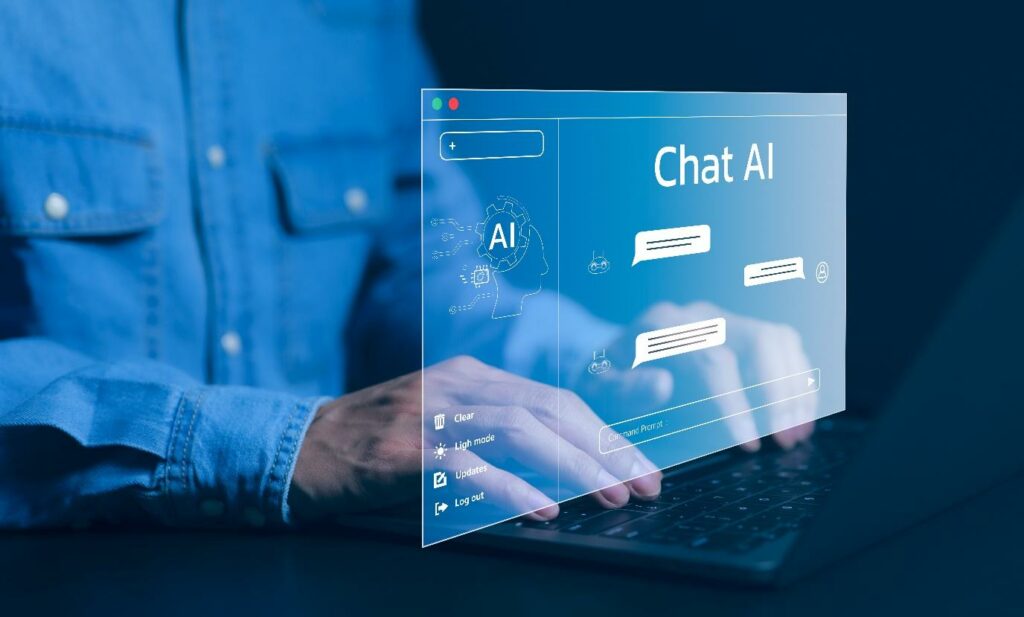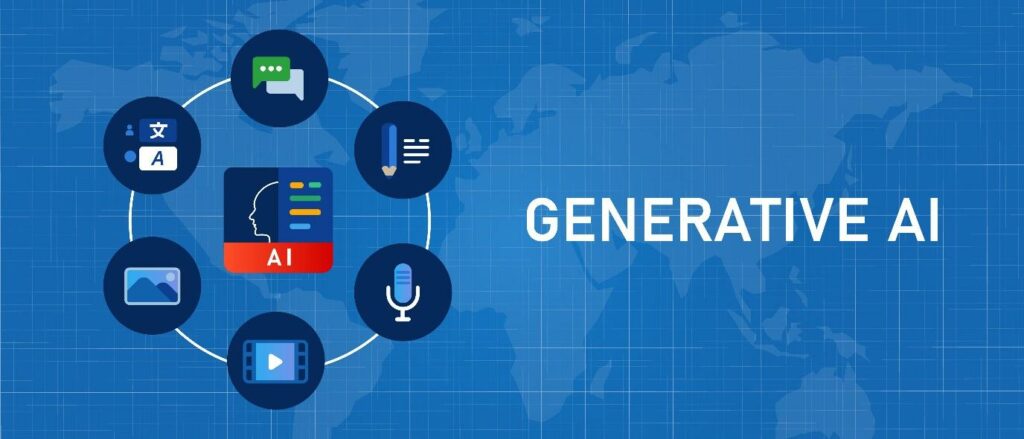As technology continues to evolve, we are introduced to a variety of innovations that can optimize and enhance our daily tasks.
Whether it is work, academic and study-related matters, or everyday errands, different digital operations can take away our burden in just a few clicks.
The impact of Artificial Intelligence (AI) over the recent years has been inevitable—it has greatly influenced different fields, such as robotics, computer science, and design just to name a few.
Generative AI is now a big force in this field as it allows its users to create new content based on “inputs”.
An “input” refers to the data or information that is fed into the system to perform a particular task or reach a conclusion.
This data can be presented in various forms including
- Text
- Audio
- Images
- Video
So, in essence, AI systems use input data to generate new information or make decisions.
The input data can be raw or organized, and the algorithm is like a set of rules that helps the AI process the information.
The final product, or “output data,” is the response to the user’s instruction or question.
One of the most effective methods for achieving this objective is the use of generative models, which are a type of neural network.
Before a generative model can be trained, a vast amount of data in a given domain (imagine millions of photos, words, sounds, etc.) must be collected.
This data is then used to train the model to produce more data similar to the original.
Four Generative AI models concepts
Generative AI models have been trained to cater to different domains; whether you need help with writing an essay for school or looking for the nearest healthcare center, they will provide you with several different solutions on the spot.
We will further cover these categories which will help grasp the importance and usage of generative AI models:
- Language
- Audio
- Image
- Synthetic Structured Data
Large Language Models (LLMs) and their capabilities
At the heart of language-based generative models, we find the Large Language Models (LLMs).
A Large Language Model is an artificial neural network that uses its extensive collection of data to aid in tasks such as translation, content creation, summarization, and question answering to name a few.
These models have gained immense popularity for their versatility in tasks ranging from writing birthday greetings to decoding genetic sequences.
By understanding linguistic nuances, LLMs can generate coherent and contextually relevant text, demonstrating a mastery over the intricacies of human communication.
It learns how to mimic the grammatical and syntactical patterns of natural languages and uses them to complete and answer prompts provided by the user.
Whether it is writing an email response to a potential client or analyzing a written document, LLMscan streamline your workflow.

The tasks can be delivered via chatbots—automated systems that simulate human-like conversations.
Two of the most popular chatbots that have taken the digital world by storm are ChatGPT and Bard.
The user types detailed instructions for a particular task in the designated textbox, whereas the system provides an on-screen answer instantly.
An enhanced audio experience
Generative AI is revolutionizing the music industry by enabling new forms of music creation and providing personalized experiences for listeners.
It is used to develop sophisticated systems that can create new music, generate melodies and harmonies, and instill new ways of creativity.
Lyria | Advanced AI Music Generative Model
Google DeepMind in partnership with YouTube has launched Lyria—an advanced AI music generation model that revolutionizes and inspires new ways how music can be created.
The Lyria model is amped up with different functions, which help harmonize the vocals and the beat, generate scores and sequences in a cohesive and continuous manner.
You can turn your brainstormed humming into a sample—the Transform tool can help the user transform the melody into a track that contains one or several instruments, or even make it into an orchestral score.
It should be added that Lyria is equipped with Dream Track—an experiment that helps create audio samples in the style of popular musicians, partnering with such artists as Sia or John Legend.
The AI simultaneously generates the voice, which resembles the voice and the musical style of the chosen musician, the lyrics, and the backing track.
When it comes to copyright, DeepMind has released SynthId, which is a toolkit for embedding a watermark into the AI-generated audio content.
This method transforms the audio wave into a two-dimensional representation that illustrates how the sound’s frequency spectrum changes over time.
The watermark is resilient to common audio modifications, ensuring its effectiveness even when the audio is altered.
Magenta Studio by Google
Google has also released Magenta Studio, an open-source music generator that serves as a creative kit for music creators and the like.
It is a collection of five different tools:
- Continue is able to create notes that would extend the beat or melody, provided by the user.
- Generate lets the user utilize 4 bar phrases to create different variations.
- Interpolate grants you the opportunity to merge several extracts into a new track.
- Groove alters drum patterns and enhances them with a human-like touch.
- Drumify allows you to create a drum track based on the melody, provided by the user.
Meta has also introduced a music creation tool, based on audio generative models, called AudioCraft, which provides a framework that can fulfill text-to-speech operations.
It consists of three models: MusicGen generates music samples, AudioGen can create sound effects, and EnCodec offers a high-fidelity neural network-based audio compression.
Painting images with generative AI
The urge for digital editing software has grown immensely over the past years.
It is no longer limited to retouching or color grading—incorporating AI-based functions has become more popular.
Generative AI learns intricate details and styles, creating images that align with learned visual elements.
It goes beyond replication, tapping into creativity and innovation to produce visually compelling and contextually relevant images.
Recently, image generators have received widespread acclaim for their ability to create visually compelling art within minutes or even seconds.
Several of these include Midjourney, Bing Image Creator, NightCafe, and others. The users can choose between free and premium versions to adhere to their goals and expectations.
We will elaborate more on Dall-E, Photoshop and Stable Diffusion to better explain the concept of AI-based image generation.
Even though OpenAI is most notably known for launching the aforementioned ChatGPT, its products also include Dall-E—an AI system that can create images from text prompts; it can be seen as the pioneer of AI-based art.
It helps the users generate images that might never exist in the real world.
Similarly to Dall-E, Adobe’s photography and image-editing software “Photoshop” has an embedded generative AI feature that helps modify imported images and streamlines the design process for many creatives and artists.

Having launched in 2022, Stable Diffusion XL is a text-to-image diffusion model developed by Stability AI that can generate images from textual prompts.
It is a powerful and versatile text-to-image model, which can be used to create a variety of different images.
You can choose the style of the image when providing the details for the model to work on—from cinematic to cyberpunk, from psychedelic to impressionism, and many more.
It can aid artists and designers in creating book illustrations, fetching ideas for computer game characters, or even making interior visualizations.

Generative AI has also made significant contributions to scientific research, particularly in fields such as astronomy and medical imaging.
Astronomers are using AI models to design galaxies, which might help predict and understand the actions of the universe.
In medical imaging, generative AI is employed to enhance the quality of medical scans, improving diagnostic accuracy and facilitating early detection of abnormalities.
Synthetic data simulation for businesses
Due to different privacy-based laws and regulations, accessing real-world data might be challenging.
This is where synthetic data takes place.
Synthetic data, generated using sophisticated deep learning algorithms, mimics the statistical properties of real data, offering a viable alternative when real data is unavailable or restricted.
Synthetic data generation has changed various industries, especially those dealing with sensitive information, such as finance, insurance, and healthcare to name a few.
By replicating the patterns, distributions, and dependencies of real data, synthetic data empowers organizations to unlock valuable data assets for various purposes.
It is already known that synthetic data can help generate a patient’s case history and the upcoming medical journey.
This data can also assist healthcare professionals in predicting and monitoring possible outbreaks of infectious diseases.
When it comes to banking, generative AI models can help analyze customer behavior, diminish the risk of fraud, and encourage the inspection of questionable transactions.
In summary, generative AI appears as a dynamic and versatile tool, destined to reshape the means of creative expression, problem-solving, and data utilization across various industries.
As we witness its impact on language, audio, images, and synthetic data, it becomes clear that it is a valuable digital asset.
As the functions and the usage of generative AI models continue to grow, they will alleviate many time-consuming tasks, both creative and technical.
The ability of generative models to invent and utilize large datasets represents a period of heightened productivity and creative potential.

